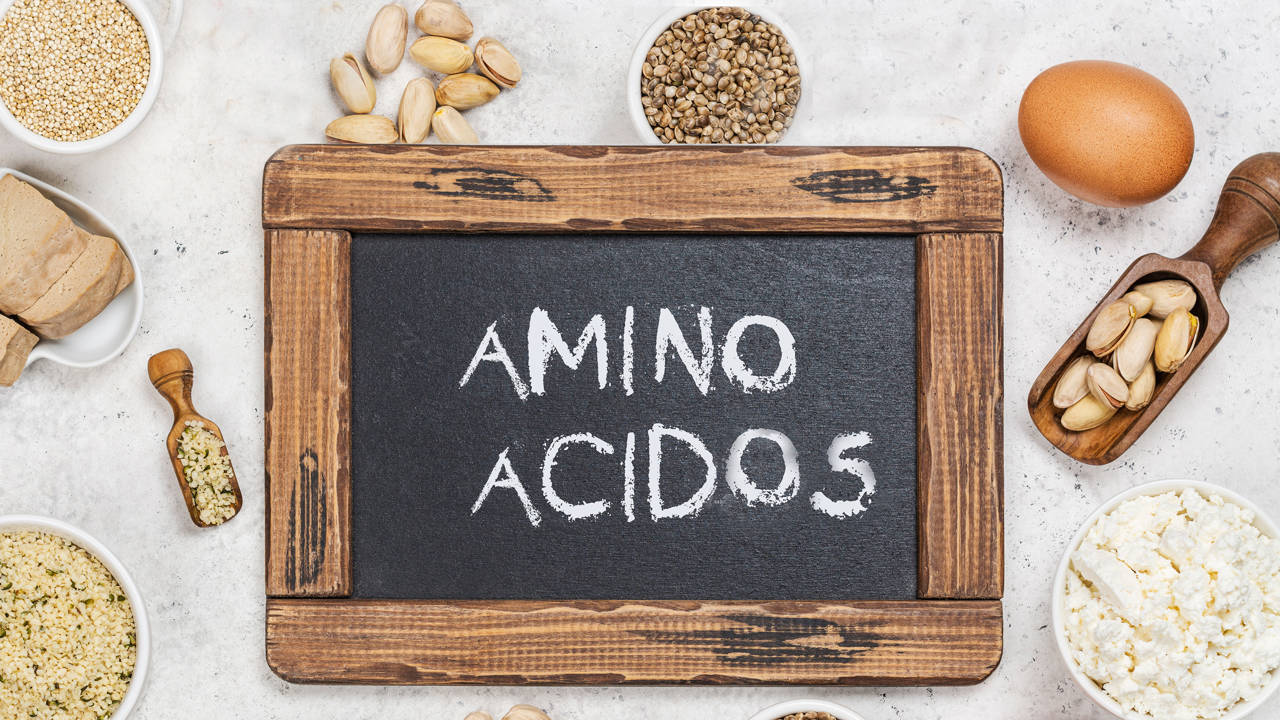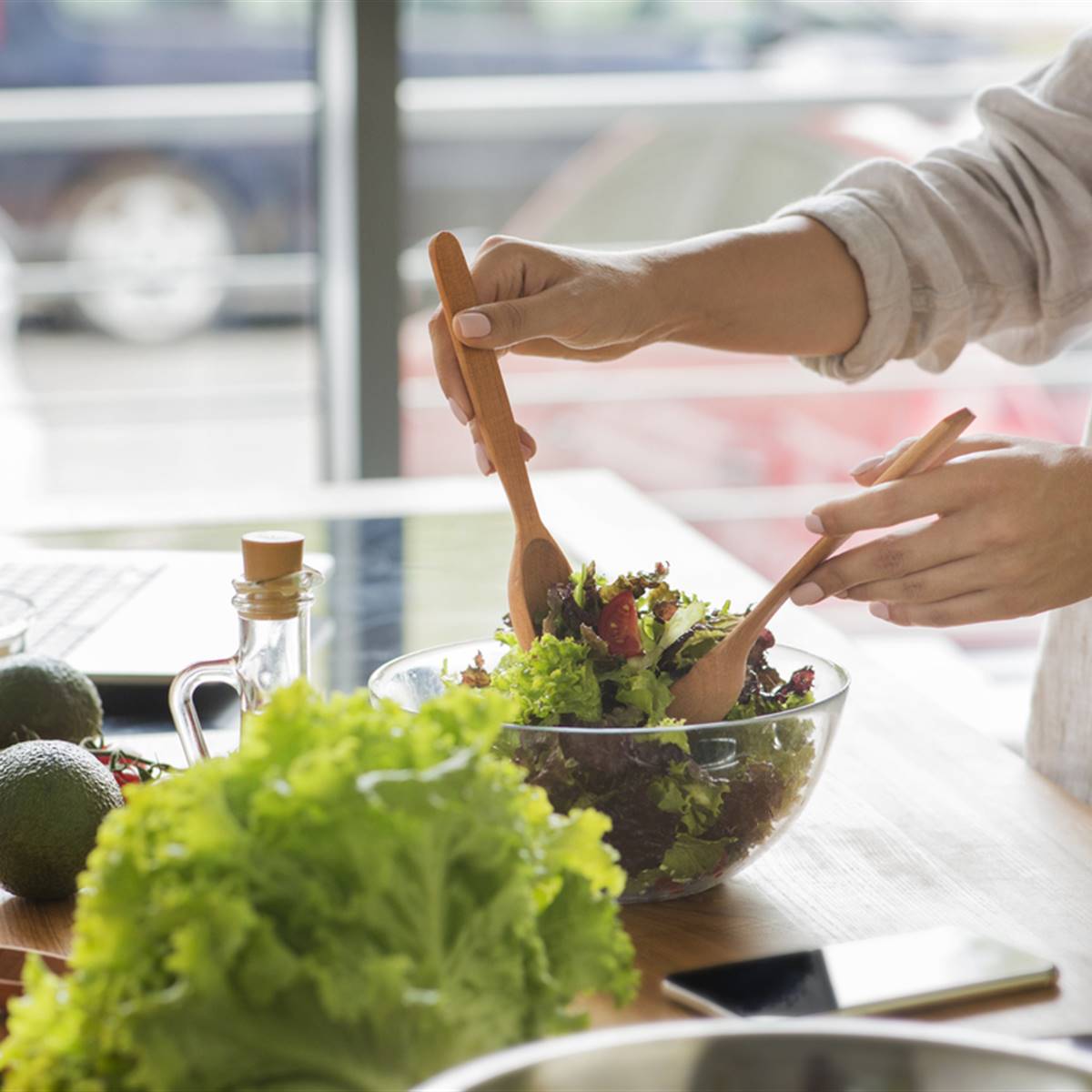Your health and well-being depend to a large extent on your body being able to create the necessary proteins. Plant foods can provide you with the amino acids you need.

- What are and what are the essential amino acids?
- Which vegetables contain essential amino acids?
- How to get a good supply of amino acids in the diet?
- Harvard’s trick so you don’t lack protein
- Essential amino acids of plant origin: why choose them
- How to improve the assimilation of essential amino acids
You may have heard that vegetarian and vegan diets don’t contain enough protein or that plant proteins aren’t as complete as those in meat. And there are many doubts about amino acids and proteins. In reality, it is your body that “manufactures” the proteins it needs with the amino acids provided by food, and vegetables contain all the essentials.
But to understand why amino acids are so important, you first have to understand what proteins are and what they are for. In fact, the word protein comes from the Greek proteins, which means “first” or “most important.”
Proteins are used to form and repair cellular structures: muscles, bones, skin, the different types of tissues that make up organs, etc. In addition, they fulfill other essential functions, such as the production of hormones, immune antibodies and enzymes. Proteins are also a source of energy in case of carbohydrate and fat deficit.
Therefore, to enjoy health it is essential that the body can manufacture proteins, formed by long chains of hundreds or thousands of amino acids.
WHAT ARE AND WHAT ARE THE ESSENTIAL AMINO ACIDS?
The proteins in our body wear out and must be replaced frequently. To synthesize new proteins, our body needs twenty amino acids, of which eight are essential (nine in children), that is, we need to ingest them with the diet since our body does not synthesize them.
The essential amino acids are: histidine (in children), tryptophan, valine, leucine, isoleucine, phenylalanine, threonine, methionine and lysine.
The body cannot use the proteins in food as we eat them: it first has to break them down to isolate the essential amino acids, which will then be recombined in the ribosomes of the cells to create our own proteins, following the instructions of our genes.
HOW MANY GRAMS OF PROTEIN A DAY DO WE NEED?
The amount of protein we need varies depending on our age, gender, weight, level of physical activity, and other factors.
Daily recommendations for sedentary adults range from 0.8 to 1.2 g per kilogram of body weight, meaning that a person weighing 70 kilos would need between 56 and 84 g of protein per day.
However, a healthy adult who plays sports may require up to 2.5 g (which means 175 g for a 70 kg person.)
WHICH VEGETABLES CONTAIN ESSENTIAL AMINO ACIDS?
Many people think that protein is only obtained from foods of animal origin, such as different types of meat and fish or eggs, but the truth is that there are a variety of excellent sources of plant protein:
- Legumes such as lentils, chickpeas, beans, peas, peanuts, lupins and soybeans (edamame, tofu, tempeh, textured soybeans). The protein content of dry grains is above 20 percent. Surprise, this ratio is equal to or exceeds meat and fish and doubles eggs!
- Cereals and pseudocereals, such as quinoa, buckwheat, brown rice, rye, amaranth and oats. The percentage of protein in the dry product is around 10-15 percent.
- Seeds such as chia, flax, hemp, sunflower and sesame contain around 15-20 percent.
- Seitan, made with wheat flour, is 25 percent protein.
Vegetables (cabbage, artichokes, onions, garlic, etc.), whose contribution is 2-3 g per 100 g of food, are also not ruled out. In a balanced diet, we all need to combine a variety of all these foods; In this way, the necessary amino acids are obtained.
HOW TO GET A GOOD SUPPLY OF AMINO ACIDS IN THE DIET?
Some plant foods stand out for providing essential amino acids in adequate proportions so that the body can make the most of them.
This is the case of quinoa, with 15 percent dry protein. It also has carbohydrates with a low glycemic index, which makes it an ideal food. In fact, NASA uses it to make concentrated food formulas for astronauts.
Pistachios, soybeans, chickpeas and brewer’s yeast also contain all the essential amino acids in good proportions.
Other plant foods may be deficient in some essential amino acid, but that does not mean that, if we are vegan or vegetarian, in the same meal we have to worry about combining foods in a certain way.
Eating a varied diet throughout the day we will obtain the essential amino acids necessary to synthesize our proteins. This is enough to achieve a complete supply of amino acids with which to form new proteins.
As stated by the American Dietetic Association, plant proteins can provide adequate amounts of essential and non-essential amino acids, not being necessary to consume complementary proteins in the same meal.
ESSENTIAL AMINO ACIDS: THE HARVARD TRICK
To get the set of amino acids you need, there is nothing like combining basic foods with some very dense supplements in proteins and nutrients.
- Chickpeas: Cooked, they provide 9 g / 100 g of protein with all the essential amino acids, along with fiber, carbohydrates, B vitamins, iron and zinc.
- Lupins: They are a delicious Mediterranean snack with a 16% protein content. They are very dense in vitamins and minerals.
- Nutritional yeast: A tablespoon of 10 g provides no less than 5 g of protein and high amounts of B vitamins and minerals.
- Quinoa: It is a gluten-free pseudocereal that contains all the essential amino acids and a lot of fiber. Cooked, contains 4% protein.
- Hemp: A 15g tablespoon, which you can crush and add to salads, gives you 5g of protein with all the essential amino acids, fiber and omega-3.
In addition, to ensure you get all the amino acids you need, it is advisable to include protein foods in each of the three meals of the day.
Moreover, plant sources of amino acids are also rich in other essential nutrients, such as fiber, vitamins and minerals, antioxidant compounds, and healthy fatty acids.
To combine them in the right amount, we can follow the recommendations based on the so-called Harvard dish, a proposal from Harvard University that can be adapted to vegetarian and vegan diets.
- Vegetables and fruits occupy half of the plate (ideally a variety of different colors, if possible seasonal, local and eco).
- Legumes (at least 100 g), nuts and seeds occupy a quarter of the plate.
- Whole grains (100 g) fill the remaining quarter. It also adds extra virgin olive oil, aromatics and spices.
ESSENTIAL AMINO ACIDS OF PLANT ORIGIN: WHY CHOOSE THEM
Plant sources of amino acids have important advantages compared to meat:
- They reduce the risk of colon cancer, thanks to fiber and antioxidant nutrients.
- They are easier to digest and do not overstress the kidneys and liver.
- They decrease the incidence of cardiovascular diseases. In addition, plant foods rich in amino acids make it easier for the body to build its own proteins, because they also contain fiber and potassium.
- Fiber favors the good state of the intestinal microbiota, and this, that of the intestinal wall, which allows a good assimilation of amino acids and other nutrients necessary for the formation of proteins by the body.
- Potassium acts as a cofactor in several enzymes that facilitate the binding of amino acids to form body proteins.
- On the other hand, foods of animal origin have an excess of sodium and a deficit of potassium. They are difficult to digest and their metabolism and assimilation creates many wastes, such as urea, creatinine and uric acid, which the kidneys have to eliminate by overexertion.
- In addition, meat is usually eaten fried or barbecued, which adds toxic products, such as polycyclic aromatic hydrocarbons, heterocyclic amines and halogenated hydrocarbons. A high consumption of meat products has been associated with an increase in pancreatic, colon and breast cancer, among others, something that does not happen with plant foods.
- On the other hand, vegetable proteins produce less impact on the climate and the environment than the consumption of meat and fish, something that must also be taken into account.
HOW TO IMPROVE PROTEIN DIGESTION
In the same way that meat, fish and eggs are cooked, legumes and cereals must be properly prepared to deactivate antinutrients such as phytates, tannins, saponins and lectins, which can cause irritation and interfere with the absorption of nutrients.
In the case of legumes, to deactivate these compounds it is necessary to soak them previously (between 8 and 24 hours) and cook them for at least an hour. This will help digest them better. Do not use the same water as the soak to boil or cook them.
Some nutritionists call for caution with legume flours, especially soybean meal, because as used in baked goods, without prior soaking and with brief cooking, they could retain compounds that would be potentially unhealthy for some people.
HOW TO IMPROVE THE ASSIMILATION OF ESSENTIAL AMINO ACIDS
You can take into account some tips to increase the amount ingested and improve the assimilation of amino acids.
- Combine your meals with plant-based protein with foods rich in vitamin C. This helps increase the absorption of iron contained in legumes, whole grains and other plant-based sources.
- Try to include several sources of protein in all intakes. Possible combinations are: lentils with rice, beans with pasta or bread, couscous with chickpeas and vegetables, spaghetti with peas, rice or pasta salad with nuts or other nuts and seeds. You can also combine chickpeas with pistachios or lentil salad with walnuts. For breakfast you can take oatmeal flakes with soy, almond, hazelnut or quinoa milk.
- If you need to increase your protein intake, you can get used to taking some delicious snacks based on lupins or edamames.
- If it is a quality product, organically produced, without additives or added sugars, you can add vegetable protein powder to your drinks, yogurt or smoothies. It is recommended that the product be a mixture of vegetable proteins containing soy or peas, brown rice and some type of seed. It can be a good option when you have increased protein needs because, for example, you do sports.
- Tofu and tempeh are rich in protein with all the essential amino acids, fiber and isoflavones with antioxidant properties and regulators of sex hormone levels. In addition, they are very easy and quick to prepare products.
- Combining 100 g of legumes and 100 g of cereals you get 20 to 25 g of protein. Assess what you need based on your weight and level of physical activity. A nutritionist can help you do this.








